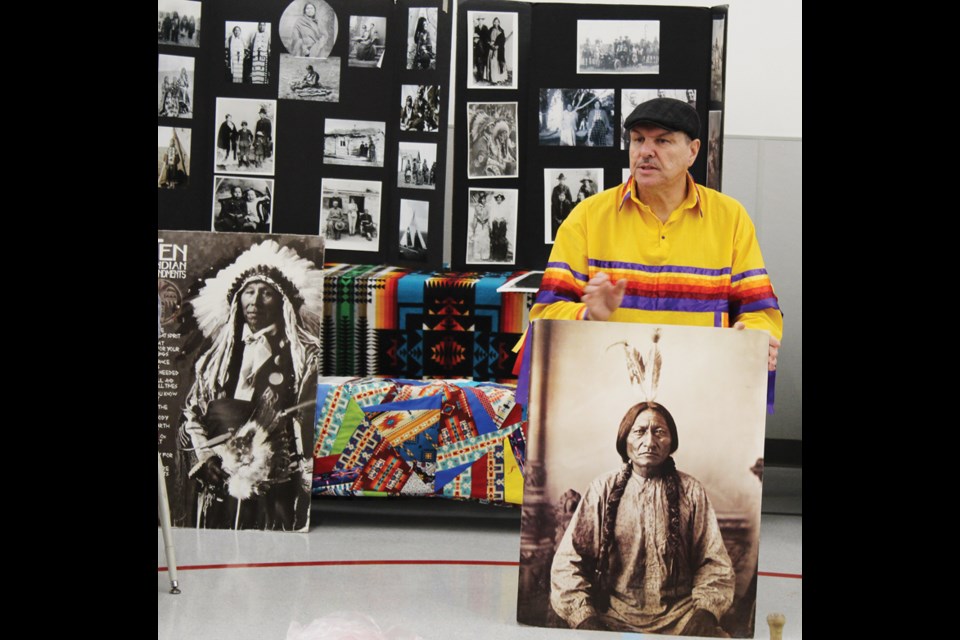On Friday, Feb. 21, on a professional development day, Goulter K-Gr.4 school learned about the customs and roots of the Sioux Valley and Canupawakpa communities from Dakota educator, Eugene Ross.
Ross shared about the struggles his community faces; the recording of plaintive and breathy melody played in the background.
He explained that even in Virden, First Nation people face racist attitudes that close doors of opportunity.
“Imagine that, in Virden!”
He emphasized the need to foster understanding between cultures.
He challenged the teachers and educational assistants to “know who your neighbours are and how gifted they are and how the many gifts have been given to us….”
The presentation involved hands-on learning as well.
School staff tried out simple games using bone, twigs and leather, pastimes devised centuries ago by Dakota aboriginal people.
Guided by Ross, teachers tried their hand at the fine beadwork the Dakota became famous for.
Another group of teachers sat on the gym floor, pounding chokecherries two berries at a time, they were told of the women who processed up to 600 pounds of berries in a hollowed out stone basin with a handball sized rock. A day’s work, all while caring for an infant strapped on their back.
“My grandmother said ‘You crushed berries from the time the sun came up until the sun went down.’ At one of Siting Bull’s camps there was 3,500 people, that’s a lot of people to feed.”
“It’s actually very satisfying,” said a teacher about the chokecherry processing. Ross nods, saying, “Remember, you are constantly getting ready for winter.”
Chokecherries were gathered after the first frost for processing. The pits are a health-giving part of the mixture, “to comb your intestines. This is like a power bar,” Ross explains.
Bone marrow, dried buffalo meat, dried berries such as Saskatoons and currents plus hazelnuts were added to make pemmican patties that could be stored for a long time.
With beautiful and historic photos, Ross’s presentation went back to 1700 when traders came – beads, metal.
ROSS TO BE AWARDED
On March 6, Eugene Ross will receive the Circle of Life award for his work in Spirituality/Culture Education.
“The award,” he said, “is for carrying this culture for this long and sharing.”
The Sioux Valley man is an Elder who works at Assiniboine Community College. In an interview he said, “my Indian name is ‘Born in the Wind’.”
His life work is dedicated to educating the Dakota about their own history as well as teaching non-aboriginals, as he did at Goulter. Ross is very proud to be taking family members - four nieces – to Winnipeg for the occasion.
Wes Nelson and Albert McLeod are also recipients of this award from Full Circle for Indigenous Education.
The organization seeks to enrich the learning and growth of people in Manitoba to support the reclamation of Indigenous Ways of Knowing and Being.




